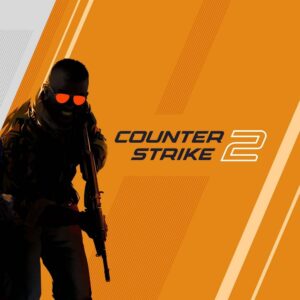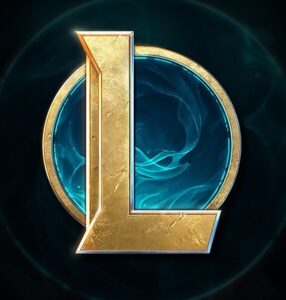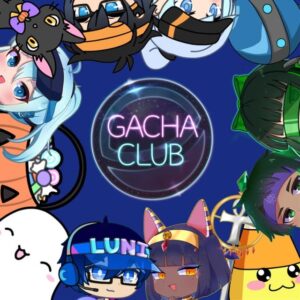The Cartographer’s Challenge: How to Design a Great Metroidvania Map
Popular Now
 FIFA 23
FIFA 23
 Brawl Stars
Brawl Stars
 The Legend of Zelda
The Legend of Zelda
 Free Fire Max
Free Fire Max
 Schedule I
Schedule I
 Stumble Guys
Stumble Guys
 Free Fire
Free Fire
 NBA 2K24
NBA 2K24
 R.E.P.O
R.E.P.O
 Geometry Dash
Geometry Dash

The success of a Metroidvania game hinges on one core element: its map. Unlike a linear corridor shooter or an open-world RPG, a great Metroidvania map is a character in its own right—a living, breathing labyrinth that guides the player through a journey of discovery and mastery. It must be both sprawling and intimate, confusing at first glance but intuitively understood by the end. The genre’s masters, from Super Metroid to Hollow Knight, have proven that a well-designed map can make a game unforgettable. This isn’t just about drawing rooms; it’s about a meticulous, interconnected process that ties every mechanic, every ability, and every secret to the world itself. Here’s a deep dive into the principles of designing a great Metroidvania map.
 1. The Symbiotic Relationship: Map and Abilities
1. The Symbiotic Relationship: Map and Abilities
You cannot design a great Metroidvania map in a vacuum. The single most crucial principle is the symbiotic relationship between your level design and your player’s abilities. The map is not a canvas; it’s a puzzle box, and the player’s powers are the keys. Every new ability must unlock new areas and fundamentally change how the player interacts with old ones. A great map designer doesn’t just create locked doors; they create opportunities for a player to feel empowered. Consider these points:
- Ability-Gated Progression: Start by defining your core abilities. Do you have a double jump? A wall climb? A dash? Each of these abilities must be tied to specific “gates” on the map—a high ledge, a narrow corridor, a gap that’s too wide to cross. These gates serve as constant teases, encouraging players to remember them and return later with the right power-up.
- The “Aha!” Moment: The best maps are designed to facilitate “aha!” moments. This happens when a player finds a new ability and immediately thinks, “Oh, now I can get to that treasure chest I saw an hour ago!” These moments of realization are the core of the Metroidvania experience. The map must be a web of these possibilities, with cleverly placed secrets and shortcuts that become accessible as the player’s toolkit expands.
- Revisiting and Re-contextualizing: Backtracking is not a chore in a great Metroidvania; it’s a reward. As the player gains new abilities, the familiar rooms and corridors of the map must be re-contextualized. A simple vertical shaft that was once a dead end becomes a shortcut, and a chasm that was impossible to cross is now a fast-travel route. This makes the player feel not just more powerful, but smarter, as they master the geography of the world.
2. The Invisible Hand: Guiding Without Hand-Holding
A great map guides the player’s journey without making them feel like they’re on a predetermined path. The goal is “guided non-linearity.” The player should always feel a sense of freedom and discovery, but the designer is always subtly steering them toward the next important location or upgrade. This is achieved through several design tricks:
- Visual Breadcrumbs and Milestones: Use visually distinct landmarks and art direction to give players a mental compass. A towering statue, a uniquely colored biome, or a memorable boss arena can serve as a mental anchor point. This prevents players from feeling lost in a sea of generic rooms and helps them build a strong mental map of the world.
- Logical Shortcuts and Loops: Design the map like a series of interconnected loops. As the player progresses deeper into an area, they should eventually unlock a shortcut that leads back to a previously visited location, like a central hub or a save point. This makes the world feel smaller and more connected, reducing tedious backtracking and rewarding smart exploration.
- Foreshadowing: Tease the player with what’s to come. Place impassable gates or enemies that are far too powerful to defeat in early areas. This not only builds anticipation but also gives the player a sense of long-term goals. They’ll see an area and know, “I’m not strong enough yet, but I’ll be back.”
 3. The Organic Flow: Weaving Regions Together
3. The Organic Flow: Weaving Regions Together
The best Metroidvania maps feel like a natural, living world, not a collection of disconnected levels. The transition between different biomes should feel organic and logical, as if the world was formed by natural processes. For example, a hot, volcanic area might logically lead to a cool, subterranean cave system. This kind of thoughtful world design enhances immersion and makes the entire experience more believable. Consider these architectural principles:
- Central Hubs: Many successful Metroidvanias, like Hollow Knight‘s Forgotten Crossroads, feature a central hub area that connects to multiple different regions. This serves as a safe base of operations, a place to buy upgrades, and a convenient place to begin a journey into a new area.
- A Sense of Scale: The map should feel large and mysterious but not overwhelming. A key technique is to vary the size and shape of rooms. Some rooms should be grand and vertical, filled with platforms and enemies, while others are small, claustrophobic corridors. This variation in scale keeps the experience fresh and helps prevent the player from feeling like they’re just moving through a grid of identical boxes.
- Seamless Transitions: The best games make the transition between regions feel seamless. As you move from a lush forest to a dark dungeon, the background art, music, and enemy types should change gradually, building a sense of natural progression. This prevents the map from feeling like a patchwork of random themes.
Conclusion: The Art of the Labyrinth
Designing a great Metroidvania map is an act of meticulous artistry and engineering. It requires a deep understanding of player psychology, a commitment to interconnected design, and the discipline to constantly iterate. The map is the heart of the game, and its health is a direct reflection of the designer’s vision. By focusing on the symbiotic relationship between abilities and the world, using subtle design tricks to guide the player, and ensuring a sense of organic flow, creators can build a labyrinth that is a joy to get lost in. The map is not just a tool for navigation; it is the story, the puzzle, and the ultimate reward of a great Metroidvania.








